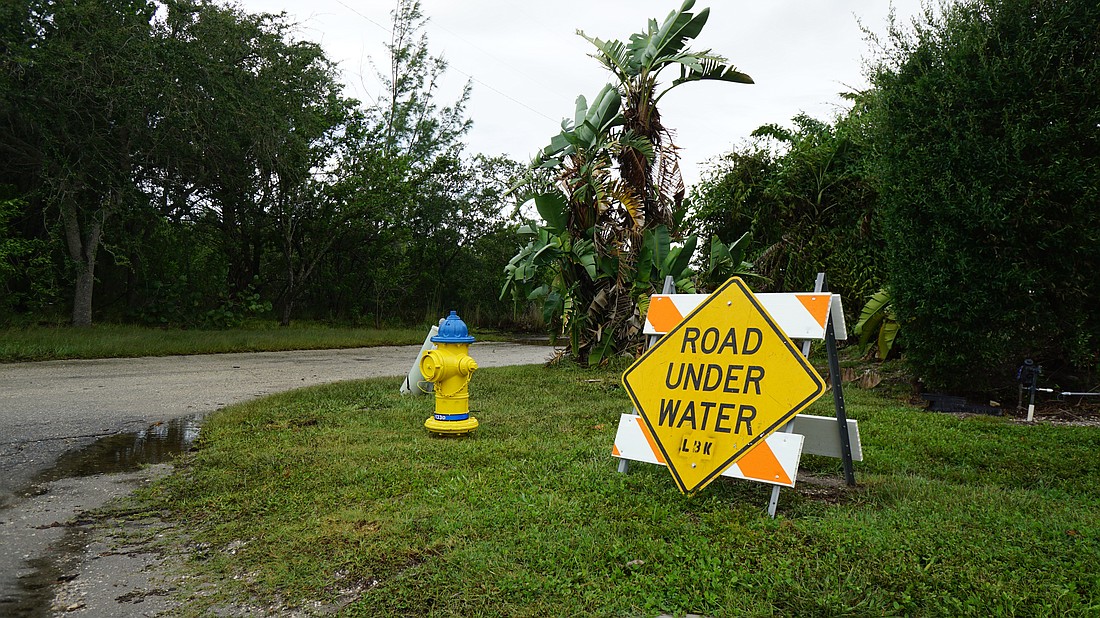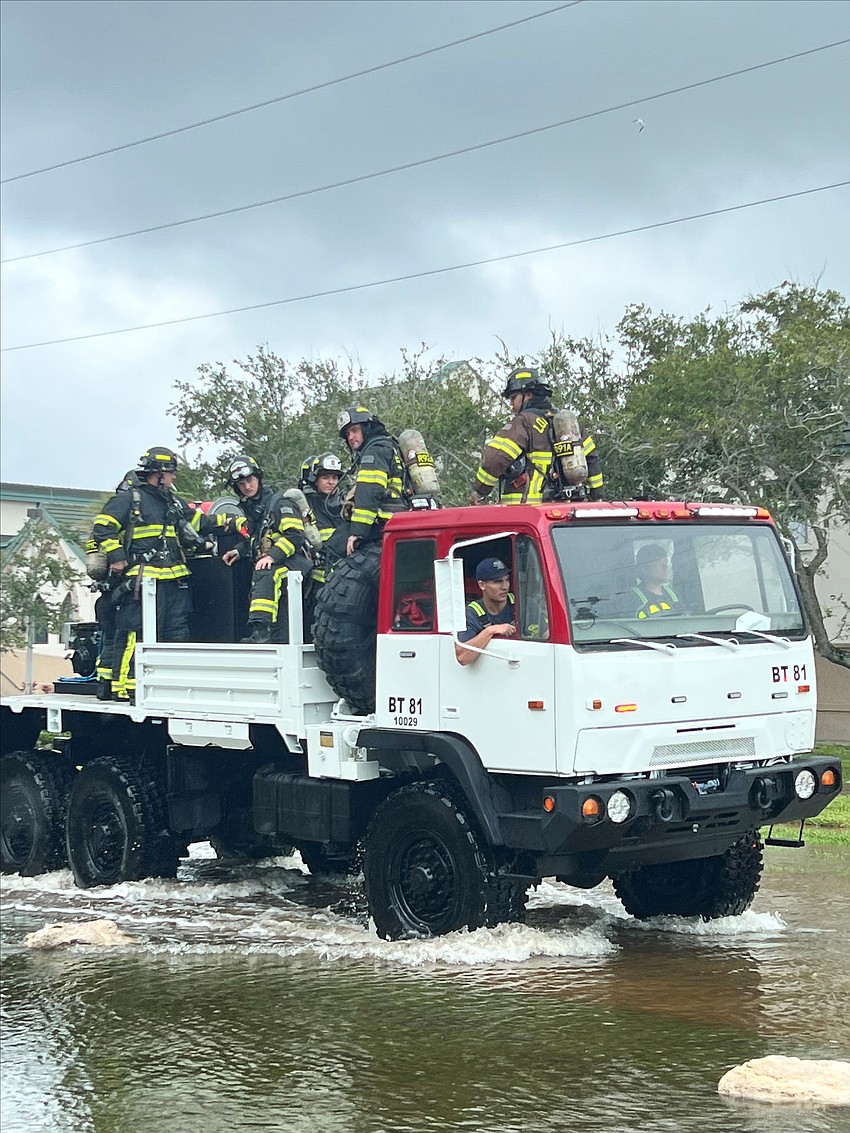- April 4, 2025
-
-
Loading

When Hurricane Idalia threatened Longboat Key with potential flooding, the island’s first responders jumped into action and stuck to the plan.
Preparations began on Sunday, Aug. 27 before the storm’s forecasted impact of Wednesday, Aug. 30. Longboat Key Fire Rescue Chief Paul Dezzi said he began early talks about the storm on Sunday ahead of meeting with Manatee and Sarasota County officials on Monday.
Also on Monday, the town’s departments began implementing their own internal hurricane plans, preparing staff for what tasks may lie ahead.
Dezzi spent all day Monday at the Sarasota County Emergency Operations Center, and then returned Tuesday morning. He then didn’t leave the center until late Wednesday night.
From the start, Dezzi said the emergency management crew knew storm surge was going to impact Longboat Key.
“We were focused on the risk of water,” Dezzi said.
Monday was the busiest preparation day for both the Longboat Key Fire Rescue and Longboat Key Police departments.
Dezzi said fire rescue started by assigning shift duties. One shift was going to stay on the island, another at the Sarasota High School emergency shelter and the third shift was to be off duty.
The fire rescue department made sure its supplies were in order, including food for the on-duty firefighter paramedics and all necessary medical supplies to treat patients.
The police department had similar preparations beginning early Monday. Chief of Police George Turner said he ensured his officers had their own plans in place with their families before assigning the officers in two squads, Alpha and Bravo.
Turner said the department made sure there was enough food for all the officers on-duty, and that all the vehicles were fueled up.
“We were 100% self-sufficient on the island during the whole storm so we could take care of ourselves,” Turner said. “That’s all part of the prep.”
Evidence needed to be taken to a secure location, and both police and fire rescue boats were taken out of the water.
“By Monday night, we were in waiting mode,” Turner said.
As the storm approached, Dezzi said the team was monitoring expected water levels, and ultimately made the decision to keep the police and fire rescue departments on the island.
The police department needed a place for the officers to sleep. Luckily, the Casa del Mar resort provided the department with rooms so the officers had a place to sleep and take a shower. Turner said he was thankful for that assistance.
If 45 mph sustained winds were expected, then the departments wouldn’t respond to calls. According to Dezzi, the island only experienced gusts in the 60s.
“But it wasn’t anything that was going to stop us,” Dezzi said.
When the storm finally brushed past Longboat Key, water was the problem for both departments.

“We had a lot of water, more than we’ve ever had,” Dezzi said.
Both departments responded to their fair share of calls. There were a lot of weather-related calls and alarms going off for the police department. Weather and alarms don’t mix well, Turner said. Most of them were false alarms, but he stressed the importance of taking each call seriously.
Around 5:30 a.m. on Wednesday, Dezzi heard many of the side streets and some parts of Gulf of Mexico Drive were impassable without high-water vehicles.

High-water vehicles are retired military vehicles, Dezzi said.
Like the name implies, the vehicles allow emergency service departments to drive through water when standard fire trucks and police patrol cars can’t.
The fire rescue department had one high-water vehicle, but needed more. The city of North Port was quick to offer assistance.
Both the North Port Fire Rescue and Police departments responded with their own high-water vehicles and some extra hands.
The fire rescue department didn’t have a large call volume, Dezzi said. The crew assisted with some minor fires on St. Armands, and had one patient transport that required the high-water vehicle to get to the patient's house.
There was also a house fire call that could have been serious. The fire rescue crew responded and heard a bell from the house, which indicated that the sprinkler system had been engaged. The resident wasn’t home, and the crew entered the house.
Inside, they found an electric wheelchair that had a bad interaction with saltwater. Dezzi said charged batteries can often start fires when they interact with saltwater. The situation could have been worse, if the chair hadn’t been directly underneath the sprinkler system.
On the north end of the island, Dezzi said the crew reported many fire hydrants were almost underwater, which would have made calls difficult.
Next came the question of reentry. Dezzi said a conference call with Town Manager Howard Tipton and other town department heads led to the decision to open the island at 5 p.m. Wednesday evening.
At that time, the island was still only accessible through the north end. St. Armand’s Circle was still heavily flooded.
Realizing the island was safe enough for residents, the team decided to move the reentry time up to 4:30 p.m. The biggest risk was water in low-lying areas, and Dezzi said he had to make sure people would be safe returning.
“We had to be careful about the decisions we made,” Dezzi said.
Dezzi’s last meeting with county officials at the EOC was at 8 p.m. on Wednesday, and the island was completely open via both sides Thursday morning.